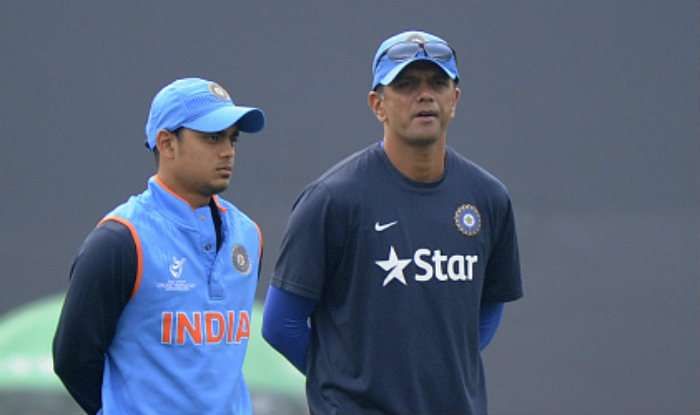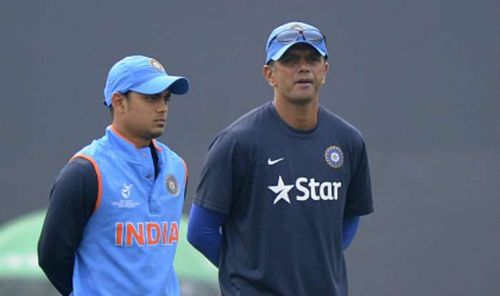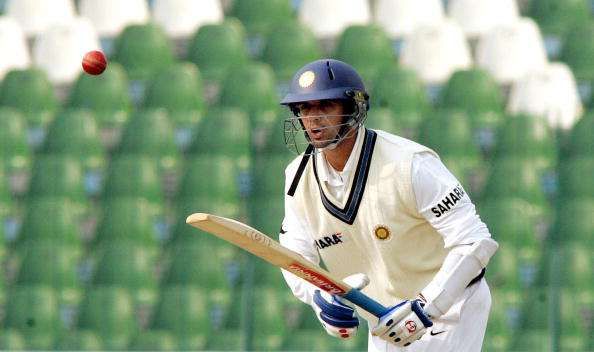
Why Rahul Dravid should be India's A team and Under-19 coach only
Most of you who have seen the cult Hindi flick of the 90’s ‘Andaz Apna Apna’ will agree that nobody could’ve performed the role of Crime Master Gogo any better than Shakti Kapoor. The actor fitted the role of the comic gangster so perfectly that even today, his name is one of the first to come to your mind when we recall that movie.
Last year, in the month of June, the new regime of the Board of Control for Cricket in India(BCCI), under the late Jagmohan Dalmiya and Anurag Thakur, formed the Cricket Advisory Committee, consisting of Sachin Tendulkar , VVS Laxman and Sourav Ganguly, who would look at the way forward for Indian cricket and how they can become the best cricket team in the world again.
However, even as most of the cricketing fraternity started to welcome that move, a few others began to ponder over another issue, which was why wasn’t Rahul Dravid part of the committee and what role was he going to be given.
Those questions were answered a few days later when the board appointed him as the India A and Under-19 coach, leading to many believing and rightly so, that the future of Indian cricket was certainly in very good and safe hands.
That opinion was proved right when under him, the ‘A’ side won the triangular series, comprising of India, South Africa and Australia and then beat the Proteas in a one-off Test at Wayanad convincingly. He replicated that success with the Under-19 team as well, leading them to the final of the World Cup, earlier this year.
Those exploits of his have now led to many believing that it may well be time to elevate him to the senior team’s head coach role and while it is certainly a very exciting proposition, I firmly believe that his present role in grooming young players fits the bill perfectly.
Giving the freedom to express – Dravid’s biggest strength as coach
One of the things that modern coaches stress upon is the need to provide players with the freedom to go onto the field and play the way they know, rather than follow the coaching manual or a set benchmark.
The Sydney Thunder, considered amongst the poorest of teams in the Big Bash League(BBL), won the title this year, thanks to some excellent man-management on the part of Paddy Upton, who allowed the players to go and play their game.
That style of coaching is something that Dravid too has displayed in recent times. The handling of a young cricketer like Rishabh Pant is a prime example of that.
On his Delhi Daredevils debut against the Gujarat Lions, Pant was sent in to bat at number 4 and although he showed glimpses of his potential with the bat, he couldn’t display his full potential in his knock of 20 runs.
Now, let’s look at the new Rishabh Pant in the return game, this time as an opener, against the same opposition in Rajkot.
The left-hander smashed a 40-ball 69 to make the target of 150 look slimmer than what it was and show exactly what he was made of.
The error on the part of the management to send someone like Pant in the middle-order was corrected and the move to send him at the top of the order where a player like him is most suited had paid dividends.
It is a characteristic that a few coaches in the modern game employ and someone like a Dav Whatmore also did in the 1996 World Cup when he sent Sanath Jayasuriya and Romesh Kaluwitharana up the order to make maximum use of the first 15 overs.
Character building can only be done at a young age
In international cricket, a lot of emphasis is often given to the kind of person you are, along with your capabilities as a player. Some of the prominent examples that come to mind are of Graeme Smith, a gutsy cricketer who succeeded with a not so textbook technique but was willing to grind it out when the going got tough.
In order to proceed forward and do well in tough conditions, Indian cricket requires people who can take the bullet on their chest, who can fight the devils and take the team home.On innumerable occasions during his 16-year career, Dravid did that. He faced up to tough scenarios and tackled them thereby showing the sort of character that he was.
The 2006 tour of Pakistan is something that springs to mind immediately. In the absence of a regular opener to partner Virender Sehwag, he moved up a slot and battled his way through the new ball, tackling the likes of Shoaib Akhtar, Mohammad Asif etc, who were bowling at a searing pace.
Just the mindset needed to tackle difficult scenarios is a quality that he can most certainly impart to the next generation that could help them face challenges with a positive attitude.
Passing on the art of remaining patient
In a country like India with close to 30 domestic teams, it is perhaps the hardest to pick 15 very good players that would compete in international tournaments. Sometimes even the bulkiest of run-makers cannot seep through and make the cut regularly. Someone like Shardul Thakur is a good example of that.
Dravid is someone who can relate to that feeling. Even before being picked for the Indian team, he was scoring bucketful of runs in Ranji Trophy cricket season-after-season, only to be not selected. The call eventually came 5 years after he had made his domestic debut and he responded with a composed 95 against England at Lord’s.
The art of waiting for the moment to arrive and maintaining a level of patience until it does is something that young Indian cricketers can most certainly learn from him and I think that’s a quality which has been seen in former internationals like Michael Hussey, who made his debut at the age of 31 after playing years of county cricket.
Several experienced voices in the last few days have spoken about Dravid being elevated to the senior level, but I firmly believe that he is the ideal man to guide our youngsters.
The saying ”Indian cricket’s future is in safe hands” has been heard a lot since Dravid’s appointment as the coach of the A team and the Under-19 team last year. If that is to be the case indeed, let’s hope he stays in the present role.

